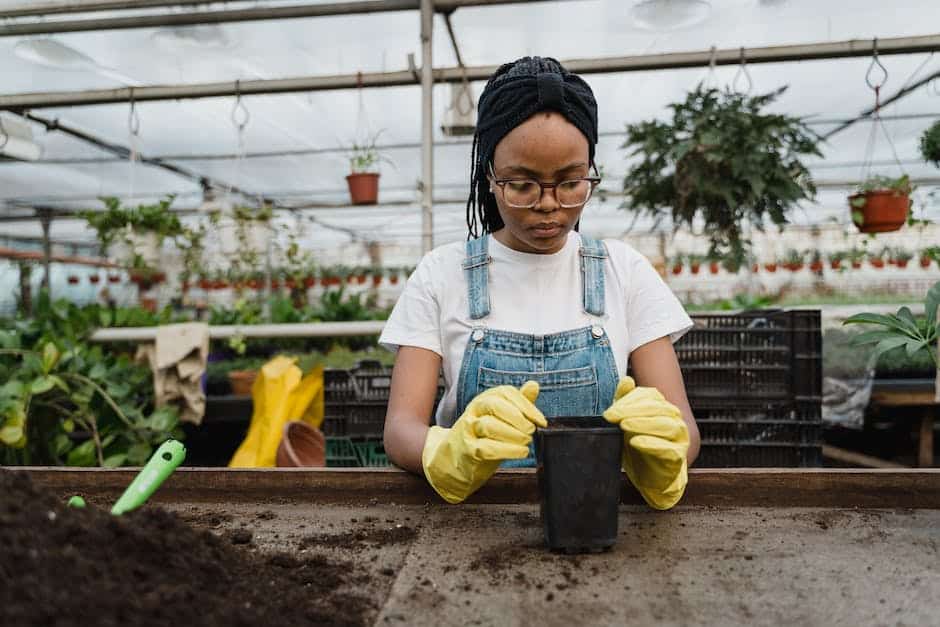How to Plant Seeds in a No-Till Garden
Planting seeds in a no-till garden is a sustainable gardening practice that helps maintain soil health, minimize weed growth, and promote healthy plant growth. By avoiding deep digging and disturbing the soil layers, you can create a thriving garden while reducing the need for excessive tilling. In this article, we will explore the best practices and tips for successfully planting seeds in a no-till garden.
Preparing the Soil
Before planting seeds in a no-till garden, it is important to prepare the soil appropriately. Loosening the soil gently with a long-handled digging fork or broad fork is recommended. Be cautious not to disturb the soil layers too much, as this can disrupt the soil structure. Avoid deep digging or turning the soil over, as it can lead to the exposure of weed seeds and disturbance of beneficial soil organisms.
Creating Holes for Planting
Once the soil is prepared, you can proceed to create holes for planting the seeds. This can be done using the tines of a fork or a handheld trowel. Gently make holes in the soil where you intend to sow the seeds. Ensure that the holes are deep enough to accommodate the seeds at the desired depth.
Adding Mulch
After planting the seeds, it is essential to add mulch around the plants. Mulch serves multiple purposes in a no-till garden. It helps retain moisture in the soil, prevents weed growth, regulates soil temperature, and improves soil fertility as it breaks down over time. Gently distribute the mulch around the plants, taking care not to cover the seeds entirely.
Maintaining the No-Till Approach
One of the key principles of a no-till garden is to avoid walking on the soil in the planting areas. This helps prevent soil compaction, which can impede root growth and nutrient absorption. Instead, create pathways that allow easy access to the plants without stepping on the soil. Consider using stepping stones or mulch-covered walkways.
Adding More Layers of Mulch and Compost
Over time, it is beneficial to continue adding layers of mulch and compost to the no-till garden. This practice helps enrich the soil with organic matter, improves soil structure, and provides essential nutrients for plant growth. Apply a thin layer of compost on top of the existing mulch periodically to support the overall health of the garden.
Tips for Successful Seed Planting in a No-Till Garden
While the above guidelines provide a general overview of planting seeds in a no-till garden, here are some additional tips to enhance your success:
- Consider planting into soybean residue first, as the soil under soybeans tends to have good tilth early on.
- Utilize cover crops to improve soil tilth and prevent soil smearing.
- Plant through standing cover crop residue rather than mowing or shredding it.
- Explore the option of planting green, which involves planting directly into the standing cover crop while it is still green and standing.
- Ensure proper soil fertility management by addressing any drainage issues, compaction, or low fertility before implementing no-till practices.
- Manage crop residue at harvest by spreading it evenly across the field to protect the soil from erosion and maintain moisture.
- Select hybrids or varieties with high stress emergence scores and suitable high-residue suitability ratings.
- Consider using premium seed treatments, such as LumiGEN seed treatments, to control seedling-attacking pathogens and insects.
- Implement a layered weed management plan with multiple modes of action and application timings to effectively control weeds.
- Plant when field conditions are fit to minimize compaction and prevent sidewall smear of the seed slot.
- Ensure proper seed slot closure by using closing attachments that provide good moisture in the seed zone and firm the seed trench.
By following these tips and maintaining a no-till approach, you can create a thriving garden that is both sustainable and low-maintenance.
Related Websites:
FAQs:
Q: What are the benefits of planting seeds in a no-till garden?
Planting seeds in a no-till garden has several benefits. It improves soil health by preserving its structure and reducing erosion. Additionally, it minimizes weed growth, saves time and effort by eliminating the need for tilling, and promotes a more sustainable and eco-friendly gardening practice.
Q: How do I prepare a no-till garden bed?
Preparing a no-till garden bed involves removing existing vegetation or weeds without tilling the soil. This can be done by using mulch to smother the plants or by building raised beds. These methods help maintain the soil’s structure, preserve beneficial organisms, and prevent weed regrowth.
Q: What kind of seeds should I choose for a no-till garden?
When selecting seeds for a no-till garden, it is important to choose high-quality, organic, or heirloom seeds. These seeds are more likely to thrive in a no-till environment and produce healthy plants. It’s recommended to look for reliable sources for purchasing seeds, such as local nurseries or reputable online sellers.
Q: How do I plant seeds in a no-till garden?
To plant seeds in a no-till garden, follow these steps: 1. Use a dibber or your finger to create planting holes. 2. Plant seeds at the correct depth specified on the seed packet. 3. Gently cover the seeds with soil or mulch. 4. Water the seeds thoroughly and maintain consistent moisture levels without overwatering. Remember to follow the specific instructions for each type of seed.
Q: How do I care for seeds in a no-till garden?
Caring for seeds in a no-till garden involves providing consistent moisture levels without overwatering. Water newly planted seeds regularly and consider using organic mulch to help retain moisture and suppress weed growth. Monitor seedlings for growth and health, and nourish the garden with organic fertilizers or compost as needed.






